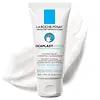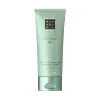What's inside
What's inside
 Key Ingredients
Key Ingredients

 Benefits
Benefits

 Concerns
Concerns

 Ingredients Side-by-side
Ingredients Side-by-side

Glycerin
HumectantWater
Skin ConditioningCetearyl Alcohol
EmollientMyristyl Myristate
EmollientUndecane
EmollientMaclura Cochinchinensis Leaf Prenylflavonoids
Santalum Album Wood Extract
PerfumingLavandula Angustifolia Flower Extract
CleansingInulin
Skin ConditioningP-Anisic Acid
MaskingTocopherol
AntioxidantStearic Acid
CleansingParfum
MaskingLevulinic Acid
PerfumingFructose
HumectantTridecane
PerfumingSodium Levulinate
Skin ConditioningPalmitic Acid
EmollientSodium Cetearyl Sulfate
CleansingPropanediol
SolventGlyceryl Caprylate
EmollientLinalool
PerfumingLimonene
PerfumingGeraniol
PerfumingCoumarin
PerfumingCitric Acid
BufferingSodium Hydroxide
BufferingGlycerin, Water, Cetearyl Alcohol, Myristyl Myristate, Undecane, Maclura Cochinchinensis Leaf Prenylflavonoids, Santalum Album Wood Extract, Lavandula Angustifolia Flower Extract, Inulin, P-Anisic Acid, Tocopherol, Stearic Acid, Parfum, Levulinic Acid, Fructose, Tridecane, Sodium Levulinate, Palmitic Acid, Sodium Cetearyl Sulfate, Propanediol, Glyceryl Caprylate, Linalool, Limonene, Geraniol, Coumarin, Citric Acid, Sodium Hydroxide
 Reviews
Reviews

Ingredients Explained
These ingredients are found in both products.
Ingredients higher up in an ingredient list are typically present in a larger amount.
Cetearyl alcohol is a mixture of two fatty alcohols: cetyl alcohol and stearyl alcohol. It is mainly used as an emulsifier. Emulsifiers help prevent the separation of oils and products. Due to its composition, it can also be used to thicken a product or help create foam.
Cetearyl alcohol is an emollient. Emollients help soothe and hydrate the skin by trapping moisture.
Studies show Cetearyl alcohol is non-toxic and non-irritating. The FDA allows products labeled "alcohol-free" to have fatty alcohols.
This ingredient is usually derived from plant oils such as palm, vegetable, or coconut oils. There is debate on whether this ingredient will cause acne.
Due to the fatty acid base, this ingredient may not be Malassezia folliculitis safe.
Learn more about Cetearyl AlcoholGlycerin is already naturally found in your skin. It helps moisturize and protect your skin.
A study from 2016 found glycerin to be more effective as a humectant than AHAs and hyaluronic acid.
As a humectant, it helps the skin stay hydrated by pulling moisture to your skin. The low molecular weight of glycerin allows it to pull moisture into the deeper layers of your skin.
Hydrated skin improves your skin barrier; Your skin barrier helps protect against irritants and bacteria.
Glycerin has also been found to have antimicrobial and antiviral properties. Due to these properties, glycerin is often used in wound and burn treatments.
In cosmetics, glycerin is usually derived from plants such as soybean or palm. However, it can also be sourced from animals, such as tallow or animal fat.
This ingredient is organic, colorless, odorless, and non-toxic.
Glycerin is the name for this ingredient in American English. British English uses Glycerol/Glycerine.
Learn more about GlycerinWater. It's the most common cosmetic ingredient of all. You'll usually see it at the top of ingredient lists, meaning that it makes up the largest part of the product.
So why is it so popular? Water most often acts as a solvent - this means that it helps dissolve other ingredients into the formulation.
You'll also recognize water as that liquid we all need to stay alive. If you see this, drink a glass of water. Stay hydrated!
Learn more about Water